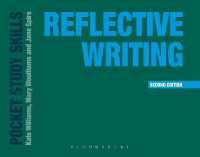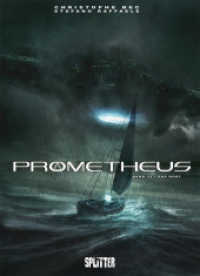Full Description
This volume explores how cultural influences between the West and East shape how science is communicated. It traces how the use of language has played an essential role in the dissemination of science and the development of ideas about science from the ancient worlds of the Middle East and China, followed by events in the Greek and Roman eras and then activities in Europe. It poses the questions: Western science? Eastern science? How do we view the world? How does culture influence language and thus affect how knowledge is communicated?
As people around the world today become more intricately involved with each other, there is a growing need to acknowledge the need for more diversity, equity and inclusion of concepts from cultural backgrounds other than the predominant Anglophone view promoted by the extensive use of English as the language of science. The authors book show that fluency in English does not guarantee success in learning or teaching in English, because the cultural background of the learner and/or the instructor strongly influences the way he or she learns or teaches. Even if both the instructor and the learner are fluent in English, when the manner of teaching does not match the expectations that the learner has, efficient teaching/learning may not be achieved. The second half of this book offers evidence for this by describing the results of research projects using English for Specific Purposes (ESP) corpora. The findings revealed profound differences in how science is taught at the university level in American and Japanese institutions.
Based on actual classroom experiences of teaching students from multilingual, multicultural backgrounds, the authors book offer teachers, students and researchers suggestions on how we can aim for a more diverse, equal and inclusive way of disseminating science today.
Contents
Introduction. Part I Science in retrospect 1. Science, culture, and language 2. Science in Japan 3. Science in a multicultural world Part II Building corpora to meet linguistic needs in science and engineering 4. Building the Japanese-English Corpus of Presentations in Science and Engineering 5. Building the Online Corpus of Academic Lectures Part III Linguistic features of scientific discourse from analyses of corpora 6. Linguistic dimension of moves in research presentations in science and engineering 7. The use of verb tense and modality in research presentations by expert and novice native English speakers 8. The use of pronouns in research presentations by expert and novice native English speakers and novice non-native English speakers 9. Analyses of American and Japanese classroom discourse in science and engineering: Asking questions in lectures Part IV Knowledge building in science and engineering 10. Legitimation Code Theory and the analysis of classroom discourse 11. Using Legitimation Code Theory to analyze classroom discourse Part V Implications for science and engineering research and education 12. Importance of awareness of cultural differences by researchers, instructors and students







